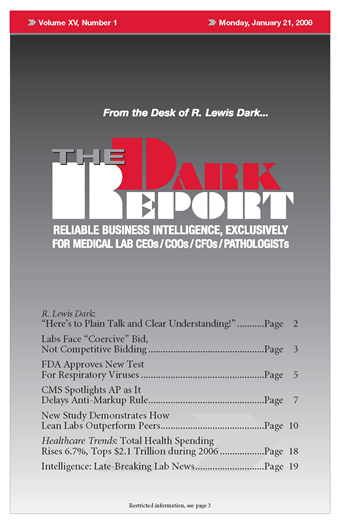CEO SUMMARY: When Medicare officials postponed implementing a new anti-markup rule late last month, it did so because of questions about how the new rule will be applied. However, the Centers for Medicare & Medicaid Services (CMS) did implement an aspect of the anti-markup rule on January 1, 2008, that affects one anatomic pathology laboratory …
CMS Spotlights AP as It Delays Anti-Markup Rule Read More »
To access this post, you must purchase The Dark Report.


